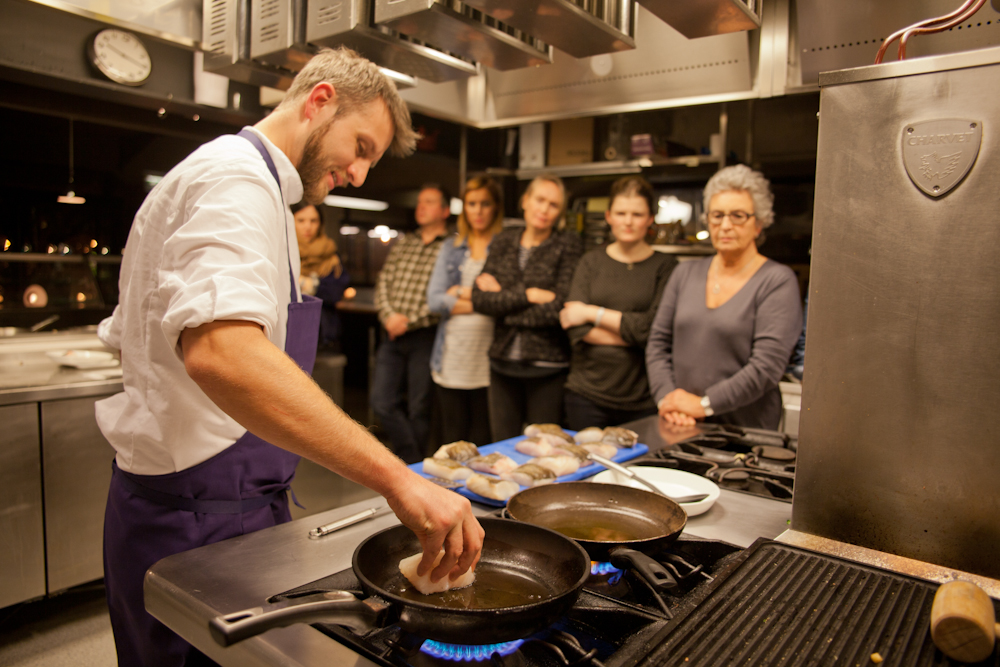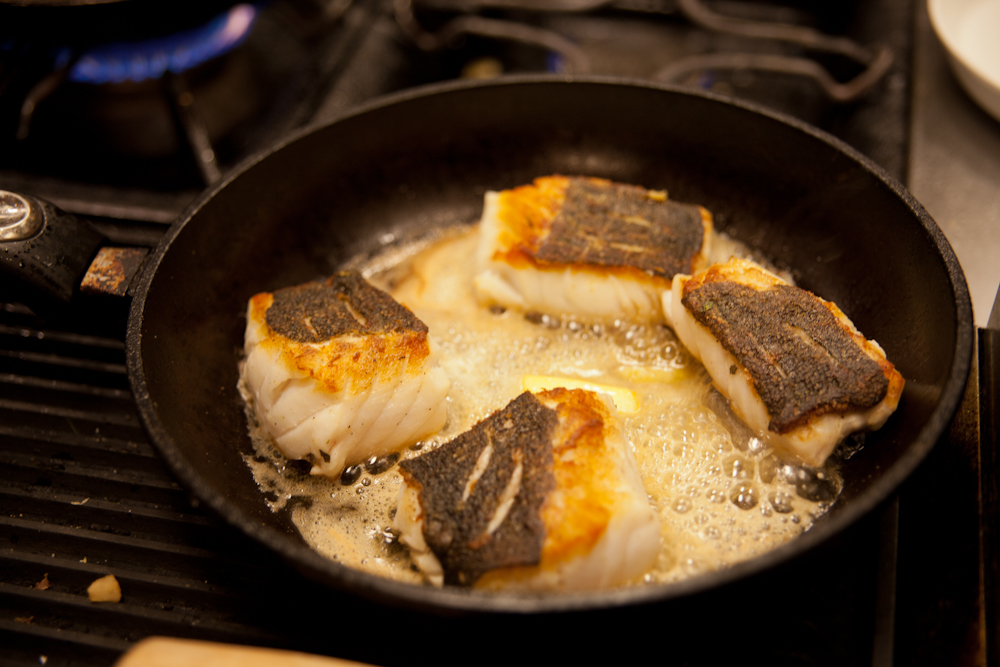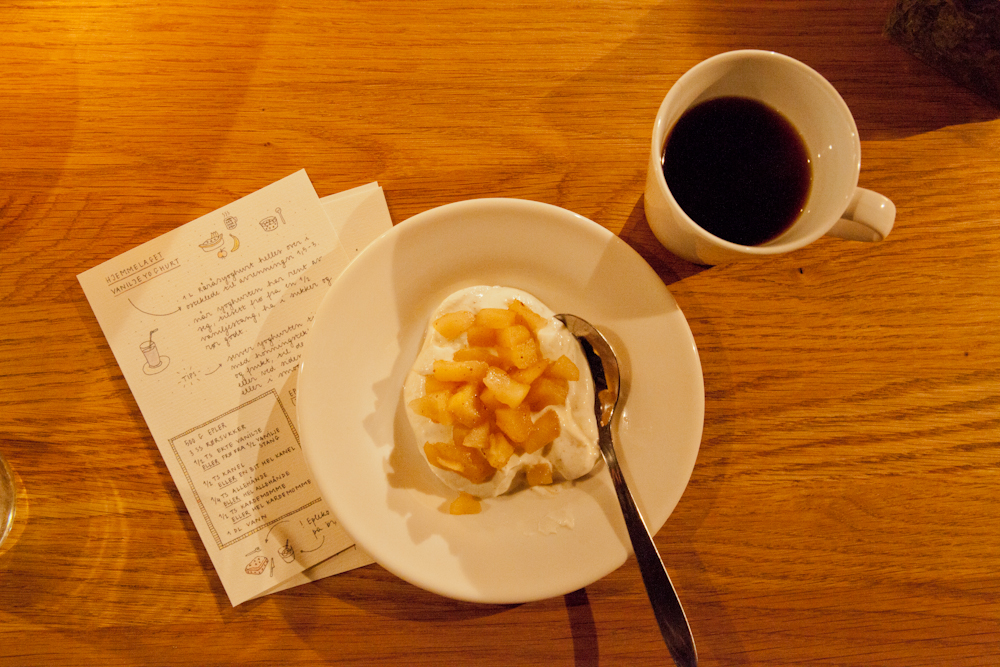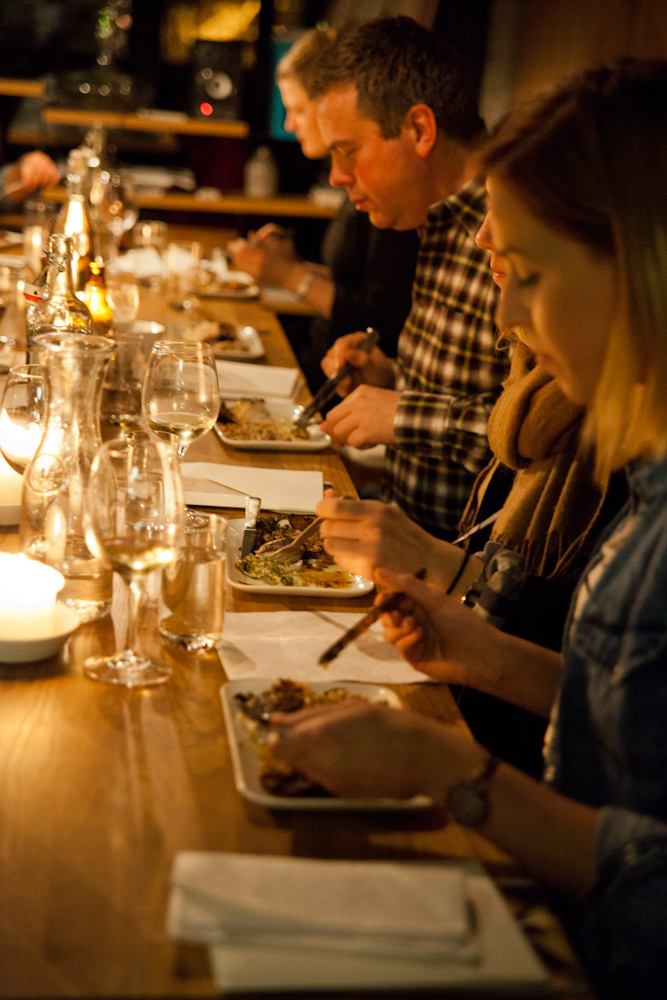Recipe
Chickpea and leek soup
Chickpea and leek soup
Serves 6
350 g chickpeas, soaked overnight or 600 g of cooked chickpeas
1 potato, peeled
2 leeks, sliced
Olive oil for frying and garnishing
3 garlic cloves
1/3 chili, deseeded, chopped
1,5 l water
Organic bouillon cubes
Parmesan
Salt and pepper to taste
Cook the chickpeas with the potatoes for about 1 hour until the chickpeas are tender. Heat the olive oil in a pan and add the leek and garlic, then sprinkle with some salt and let it simmer on low heat until the leek is tender and sweet. Add the chickpeas and potatoes – stir. Pour over 2/3 of the water and stock cubes, and let it simmer for 15 minutes.
Now you can decide whether you’d like it to be a pureed soup or a clear and chunky one – or half and half, even. If wanting a pureed soup – puré in a food prosessor. Add salt and pepper to taste.
It can be served both cold, chilled or hot topped with shredded parmesan and some good olive oil.
Vichyssoise
Serves 4
2 leeks, finely sliced
1 garlic clove, finely chopped
2 tablespoons butter
4 potatoes, cubed
1 organic bouillon cube, both vegetable and chicken stock will do
2 dl water
2 dl full-fat milk or cream
Grated nutmeg, salt and pepper to taste
Add the butter to a large pan and sauté the leek on low heat until it is soft. Add the garlic and let it simmer for a minute with the leek. Add potatoes, bouillon and water, and boil up until the potatoes are tender (approx. 10-15 minutes).
Add milk or cream, and puré the soup in a food prosessor. Add salt, pepper and grated nutmeg to taste. For a different twist on the classic vichysoisse, sprinkle with a bit of cayenne and top with some fresh, peeled shrimp.
Baked beets – and other root vegetables
Serves 4
1 big beet – red, yellow or chioggia
And/or:
2 carrots
1-2 parsnips
1 parsley root
4 potatoes
4 garlic cloves, whole, unpeeled
Salt to sprinkle the veggies with after they’re baked, to keep most of the juices in there
Chopped herbs; rosemary, thyme or oregano
Wash the vegetables and peel what needs to be peeled, then cut them into bite-size pieces. Sprinkle with a bit of olive oil, pepper and herbs, mix.
Bake on 175 degrees celsius for about 45 minutes. Check on them after about 25 minutes and turn them a bit to ensure that every pieces is thoroughly baked.
Pan-fried and baked cod in soy butter
Buy the cod whole and filet it, or get the fish monger to do it for you. Scrape the skin of the fish with a knife to clean the skin.
One can salt the cod and wash of the salt after 10-15 minutes, but if it is fresh fish, this won’t be needed.
Keep the skin on and cut two slight cuts into it to keep it from curling in the pan. Ground some sea salt and pepper over the fish and fry in oil, on high heat for about 4 minutes. Then add a bit of butter to the pan and turn the filets. Fry for another minute (depending on the thickness of the filet).
Soy butter
Finely chop equal amounts of garlic and ginger. On medium heat, melt some butter and keep warming it until it is nicely browned and nutty in flavour. Be careful not to burn it!
Add the soy, garlic and ginger. Pour over the fish before serving.
Stewed green kale with garlic and cream
Serves 4
2 large green kale leaves
2 dl cold water
1 tablespoon oil
1 garlic clove
2 dl cream
1 teaspoon fresh estragon or 1/2 teaspoon dried estragon
2 teaspoons of freshly squeezed lemon juice
1 teaspoon salt
Freshly ground pepper
Rinse the green kale thoroughly and cut into thin strips, and finely chop the garlic. On high heat, add the green kale to a frying pan and quickly pour over the water. When it starts to steam, the kale will “collapse”.
When the water has evaporated, turn down the heat and add the oil and garlic, fry for a minute’s time. Add the cream and let it simmer while you stir it for about 5 minutes. Add the estragon, and lemon juice and salt to taste.
Let it simmer on low heat for about 30 minutes in order for the kale to become silky and soft.
Rice and grains
Calculating amount of rice and grains:
– White rice: 1 dl pr person
– Wild rice: 0,4 dl pr person
– Barley and spelt: 0,3 dl pr person
– 1 teaspoon salt pr l of water
Grains and wild rice can advantageously be soaked overnight in order to reduce the cooking time.
Measure the need amount of rice or grains and rinse well. Measure just under the double amount of water and boil up with the rice/grains added. White rice takes about 15-20 minutes to cook, and soaked grains and wild rice cooks in about 25 minutes, while dried grains and rice cook in about 35 minutes.
Tip: for extra taste, replace the water with stock and served with chopped fresh herbs.
Homemade vanilla yoghurt
1 liter organic yoghurt
1/2 vanilla pod
Pour the yoghurt over a cheesecloth and let the excess liquid run/drip off for about 1,5-3,0 hours.
When the excess liquid has run off, add the seeds from half a vanilla pod, some sugar to taste (depending on how sweet you like it) and stir well.
Tip: serve the yoghurt for breakfast with fresh fruit and honeyroasted nuts, for the dessert with berries or beside a piece of cake. It also works great in a smoothie.
Apple compote
Makes 3 dl compote
500 g apples
3 tablespoons cane sugar
1/2 teaspoon vanilla extract or 1/2 vanilla pod
1/2 teaspoon ground cinnamon or 1 cinnamon stick
1/4 teaspoon ground or whole allspice
1/2 teaspoon ground or whole cardamom
1 dl water
Peel the apples, remove the core and cut into cubes. Add to a pan with cane sugar, vanilla, the spices and water. Let is simmer until the apples are tender, about 15 minutes.
Tastes great both on a slice of toast and on top of some vanilla yoghurt.
Tip: to preserve good apples through the winter, one can cut them into boats and add to some salted water, to avoid them getting brown. Put the apples in a plastic bag or container and freeze. Use whenever you need them!
Recipes: Camilla Wilse
Photos: Asaki Abumi






